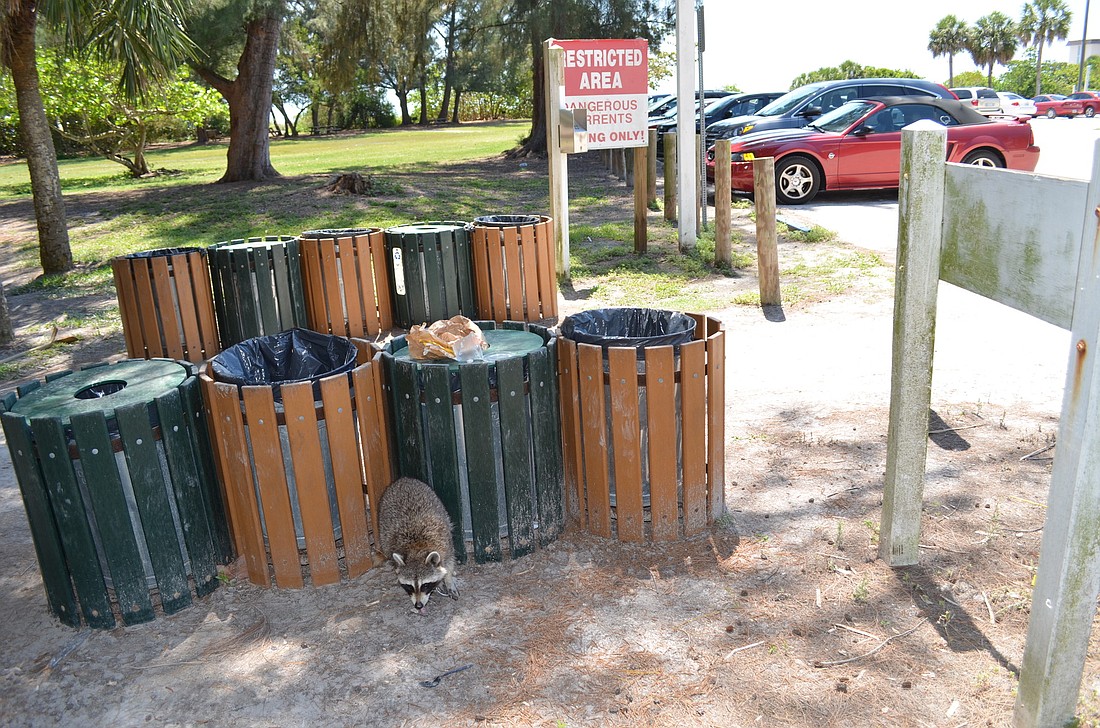- April 24, 2024
-
-
Loading

Loading

Some find the growing presence of raccoons in Ted Sperling Park at South Lido Beach something other than cute or charming: They find it worrisome.
Residents on Lido Key, concerned about the booming raccoon population and its seeming indifference to the presence of humans, asked the city what was being done about the issue. The answer was found with the Sarasota County Parks and Recreation department, which is responsible for overseeing the park and has attempted to address the raccoon problems in the area for more than a decade.
George Tatge, the county’s manager of beaches, says the issues stem from the fact that some park visitors encourage the behavior of the raccoons.
“It’s been an issue the entire time I’ve been going to that park — for the past 20 years, that I can recall,” Tatge said. “It’s been a very popular place for the public to see the raccoons.”
Those who are enamored by the raccoons have a tendency to feed them, which diminishes the animals’ natural fear of humans and encourages them to seek food from people during the day. About 10 years ago, the county first began an educational effort to prevent people from feeding the raccoons. Despite that push — which included installing signs and asking law enforcement to keep an eye out for rogue raccoon feeders — the issue has not subsided.
The issue has seemingly gotten worse in the past few months, Tatge said, because of the increased tourist activity. Although the county does not track the fluctuating raccoon population, more people visit the park during the height of season, many of whom are from out of town and are less familiar with the county’s policy regarding feeding animals. In addition, the increased waste produced by visitors becomes a source of food for raccoons.
The well-fed animals also reproduce more and have bigger litters. They learn how to forage for food in urban settings by approaching humans, digging through trash cans and even nicking food from picnic baskets. This becomes not only a nuisance, Tatge says, but also a safety hazard — any wild animal that’s unafraid of humans poses a threat.
The county is now going beyond education to address the issue. Over the past several months, it has worked to reduce the population by trapping some animals. In addition, it’s attempting to manage the trash cans in the park more effectively. The county is now placing fewer bins in more carefully considered locations to protect the garbage from the animals, and is experimenting with a variety of wildlife-proof receptacles.
The goal, Tatge said, is not to eliminate the raccoon population. He knows that, regardless of the risks they might pose, they’re still an appealing sight for some visitors. Instead, the county hopes to manage the population and reinforce behaviors that make it safe for raccoons to coexist with humans.
“A well-behaved raccoon has a natural fear of man and feeds at night; it doesn’t rely on humans to survive,” Tatge said. “When I see behavior that matches that, I know that we’ve been pretty successful.”
Contact David Conway at [email protected]